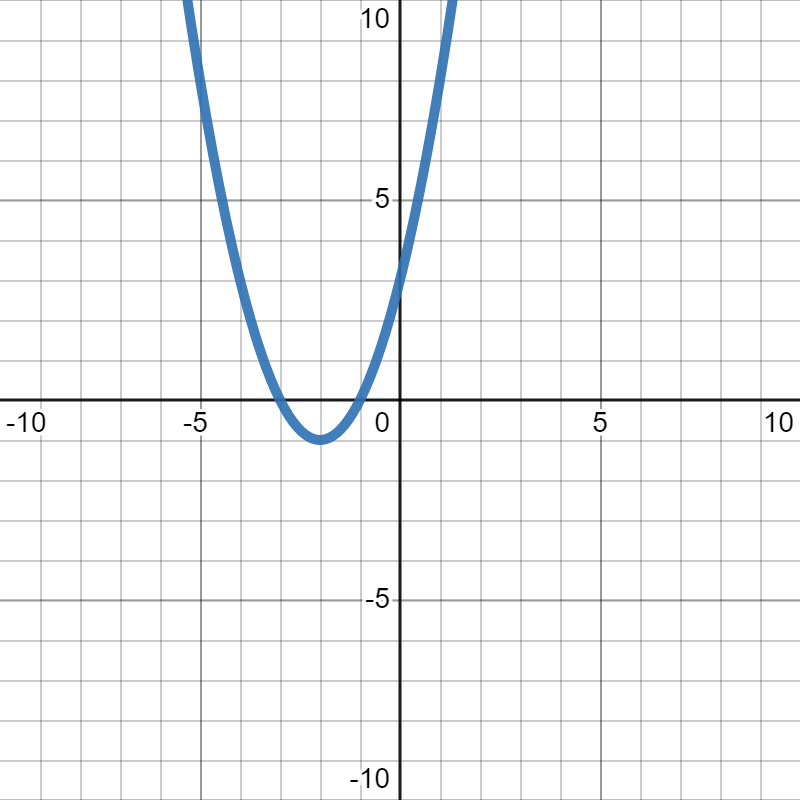Suppose we want to find the
\(x\)- and
\(y\)-intercepts of the graph below:
Looking along the
\(x\)-axis, we see that the graph crosses it where
\(x=-3\) and where
\(x=-1\text{.}\) Since we need to write them as ordered pairs, and any point on the
\(x\)-axis has
\(y=0\text{,}\) that means we have two
\(x\)-intercepts:
\((-3,0)\) and
\((-1,0)\text{.}\)
Looking along the
\(y\)-axis, we see that the graph crosses it where
\(y=3\text{.}\) Since we need to write them as ordered pairs, and any point on the
\(y\)-axis has
\(x=0\text{,}\) that means we have the
\(y\)-intercept at
\((0,3)\text{.}\)
